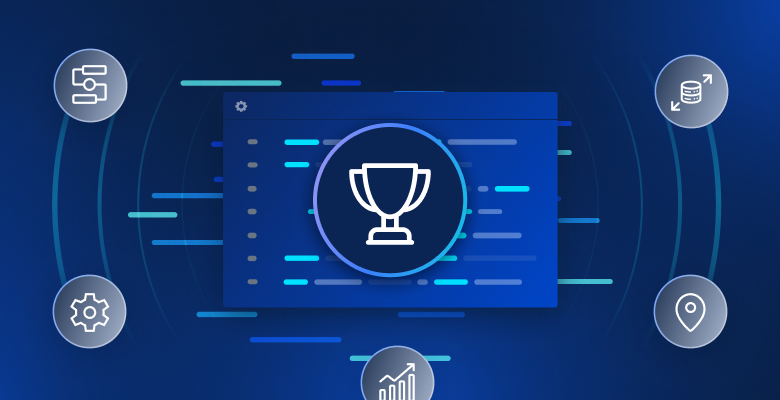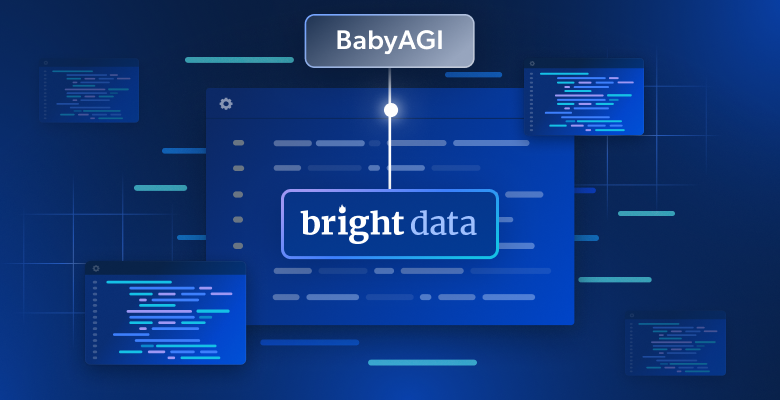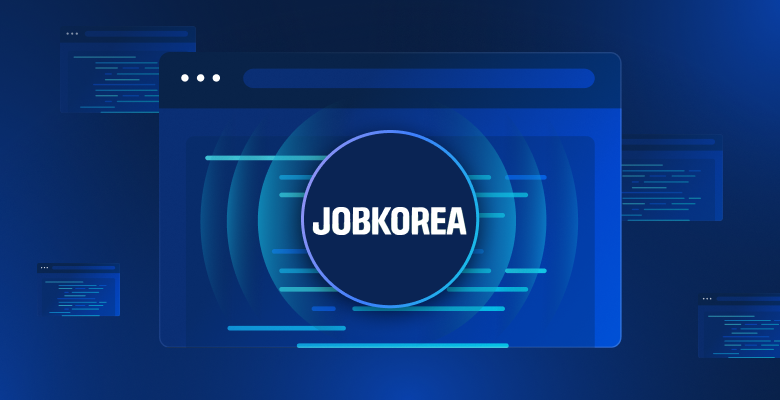In this article, you’ll learn about different factors that influence data collection costs as well as strategies to estimate and reduce these costs. We’ll also cover some of the pros and cons of in-house scraping versus third-party solutions.
Key Factors that Influence Data Collection Costs
There are all kinds of factors that can influence data collection costs, such as acquisition costs and data complexity.
Data Complexity
The cost of acquiring data is highly correlated with the complexity of the target data. Most modern websites use JavaScript to render dynamic and interactive content after some user interaction. As a result, when web scrapers fetch the web page’s HTML source, it doesn’t contain any useful data. Scrapers must rely on browser automation tools like Selenium to scrape dynamic content.
The Document Object Model (DOM) structure of the target website also impacts data collection costs. For instance, if the data you want is nested deep within the DOM hierarchy, you would need to navigate through multiple levels of elements to find the data, slowing down the process.
Data size and collection frequency also influence storage and server requirements, which can impact the bottom line. For example, a dataset of social media posts may need to be scraped frequently and could include text, images, or videos—all of which impact data size. These factors drive up infrastructure requirements, increasing storage, bandwidth, and computational resources.
Site Restrictions
Often, target websites have checks in place to detect and block bot traffic. Such checks are usually added to maintain high availability for human traffic, block malicious actors, avoid unexpected server costs, or discourage scraping.
Let’s briefly take a look at a few of the roadblocks you may encounter when collecting data:
Rate Limiting
If you send too many requests to a web server within a given timeframe, the server might throw a 429 error or ban your IP address from accessing the website. To prevent rate limiting, you may need to throttle your requests or use a proxy server to distribute them across multiple IP addresses. However, these measures can affect the time and resources needed to collect the data. For instance, adding a one-second delay between requests to avoid rate limiting can extend scraping times and increase server costs.
CAPTCHAs
Websites analyze incoming traffic based on things like IP addresses, sign-in attempts, and user behavior to differentiate suspicious or bot traffic from real users. Based on these signals, the website might present a CAPTCHA challenge to determine whether the user is a human or a bot. CAPTCHA is a challenge-response test where website visitors complete a task or puzzle to verify they’re human:

To bypass CAPTCHA prompts, you can use a CAPTCHA solver, but it significantly impacts scraping speed and costs based on the volume of CAPTCHA-covered web pages that you need to scrape.
IP Blocks
If a website detects multiple violations of its terms of use, such as too many requests, automated traffic, or suspicious user interactions, the website might block that particular IP address. Certain websites also restrict access based on the geographical region of the user. To avoid restrictions in these scenarios, you can use a virtual private network (VPN) or a proxy server to emulate traffic from different IP addresses.
A proxy server works at the application level, enabling granular customization by using different servers for various requests. A VPN works at the network layer, routing all requests through a single protected IP.
When it comes to web scraping, proxies are faster, cheaper, and more reliable, but they require some initial setup. For simpler scraping tasks, a VPN may be more convenient since it’s easier to set up and often free, but it offers less flexibility for configuration.
Cost Estimation
Now that you understand what the challenges of data collection are and how they impact the bottom line, you can try and estimate costs based on data volume, frequency, and complexity.
Data Volume
As the size of data grows, the storage, bandwidth, and processing cost for handling it can increase exponentially. Using the base infrastructure costs, you can get an estimate of the total costs based on the volume of data to be acquired:
Cost = (Storage cost per GB + Bandwidth cost per GB of data transferred + Server cost to acquire one GB data) * Amount of data in GB
Before building a dataset, conduct a cost analysis for various data sizes to estimate both the current and future costs. This can help you avoid unexpected surprises when it comes to acquisition costs and development efforts.
Frequency
Depending on the type of data, you might need to scrape it frequently to ensure fresh data is available for consumption. For instance, a stock market dataset needs to be updated every few minutes to ensure that it follows the real-time values closely.
Just like data volume, the frequency of scraping directly impacts bandwidth, storage, and server costs. You can estimate costs using this formula:
Cost = (Storage cost per GB + Bandwidth cost per GB of data transferred + Server cost to acquire one GB data) * Amount of data in GB * Frequency of scraping tasks
Even small scraping tasks can quickly add up. For instance, scraping the Hacker News latest feed once a day might cost just a few dollars since the data size is small. However, increasing the frequency to every ten minutes could drive up costs by as much as one hundred times.
Target Website Behavior
You must perform technical spikes to help understand the structure of the target data and any restrictions they enforce. This information is key to helping you estimate data acquisition costs. A technical spike gives teams the time and resources they need to familiarize themselves with the target website, understand its data structure, and uncover potential issues that could slow down scraping.
Additionally, websites like e-commerce platforms, social media, and news sites often change their structure or data frequently. This requires regular updates to scraping scripts, leading to higher maintenance costs.
Technical spikes can also help teams evaluate if they should buy a ready-to-use dataset instead of creating one from scratch.
Strategies to Reduce Costs
Data collection comes with various challenges and complexities that can drive up costs, but here are some strategies to help you reduce costs:
Proxy Rotation
Proxy rotation is a technique commonly used for web scraping, where different IP addresses are used to connect to a website, making it difficult for websites to track the requests. You can implement triggers based on time frame, HTTP response code, or the number of requests. Efficient proxy rotation can help you bypass website restrictions and ensure reliable and cost-effective web scraping.
Keep in mind that manual IP rotation has limitations. For instance, it might miss some edge cases with certain response codes or run out of available IPs. Instead, you can use a targeted solution for IP rotation that provides better stability with access to millions of geographically distributed IPs. Specialized tools help enable smooth operations by reducing IP bans and increasing the number of successful requests.
Automation Tools
Managing in-house infrastructure for data collection and storage can be challenging, especially as data volume and frequency increase. Automated scraping tools and APIs can help simplify web scraping and scale your infrastructure efficiently.
For example, web-scraper APIs can automatically adapt to changes in a target website’s data structure, managing bulk requests and handling efficient parsing and validations. These features help teams deploy faster, significantly reducing the time and effort required to build and maintain a custom web-scraping solution. Tools like the Bright Data Web Scraper API provide up-to-date, cost-effective access to structured data from over a hundred websites.
If the cost of building a custom dataset is too high for you, consider using a prebuilt dataset. Prebuilt datasets eliminate most of the development and infrastructure costs, and they provide you access to fresh, clean, and validated data in a format of your choice.
Server Optimization and Scaling
Depending on the data to be collected, you can implement optimizations to match the workload’s requirements. For example, if you use a large cloud instance for simple data scraping tasks, you might end up paying for unutilized resources like CPU or memory. You can review device performance metrics and tweak your server configuration to allocate the right amount of CPU, memory, and storage, ensuring optimal usage.
You can also implement scheduled workloads to spread out extraction tasks and utilize existing resources during non-peak hours. For lightweight extraction tasks, consider using serverless options like Amazon Web Services (AWS) Lambda to ensure that you pay only for the resources you use.
In-House Data Collection Solutions vs. Third-Party Tools
Let’s explore how in-house data collection solutions compare to third-party tools and what factors might influence your decision to use one or the other.
Pros and Cons of In-House Data Collection Solutions
An in-house data collection solution offers the flexibility to customize extraction, processing, or storage steps to meet specific requirements. The workflow can also be easily integrated with existing data sources and internal systems to enrich the data. For example, a real-estate company could scrape Zillow listings and augment the listings with their internal buyer or seller data.
For businesses handling sensitive data, an in-house approach offers complete control over the security and privacy of data collection and storage. It also simplifies compliance and regulatory requirements by keeping the entire process in-house.
Keep in mind that an in-house solution comes with significant development, maintenance, and infrastructure costs. These systems require skilled professionals to ensure reliability, speed, and compliance. As the data grows, these systems require significant investments to scale to meet the requirements.
Pros and Cons of Third-Party Data Collection Tools
With third-party data collection tools, you can get started quickly and focus on the business requirements instead of handling infrastructure and target website complexities. Third-party tools automatically handle issues related to data discovery, bulk request handling, parsing, cleaning, and concurrency, ensuring consistent performance with high uptime and unlimited scale without compromising performance. Additionally, third-party solutions offer built-in compliance with certain regulations and provide configuration options to customize the collection process.
You can leverage third-party tools like web-scraping APIs, ready-to-use datasets, and proxies for reliable, fast, and cost-effective web scraping. These tools eliminate the need to maintain a dedicated infrastructure, making them a less expensive option. Most web-scraping solutions provide multiple pricing packages to choose from with different request quotas catering to small and large businesses. As a result, more companies are shifting toward third-party web-scraping solutions instead of maintaining an in-house infrastructure. Read more about the best dataset websites and the best scraping tools.
Keep in mind that third-party tools provide less control over the data collection process as compared to in-house solutions. It might not be possible to enforce certain security policies during the collection phase. For example, if your organization requires all data to be processed in a certain geographical region, this might not be supported by all third-party data collection tools.
Bright Data to Lower Data Collection Costs

If you want to collect high-quality, ready-to-use, and reliable data, Bright Data is the tool for you. With our web scraper APIs and proxy solutions, you can easily scrape data from hundreds of websites with ease.
The Bright Data Web Scraper API provides easy-to-use and scalable APIs, enabling bulk extraction of data from popular websites like Yelp, Amazon, and Zillow, in structured JSON or CSV format. With the Web Scraper API, you don’t have to maintain complex infrastructure, saving you time and money.
Additionally, Bright Data’s proxy services provide an advanced infrastructure to bypass target website restrictions, enabling higher success rates and faster response time. Bright Data offers extensive geographic coverage, IP rotation, CAPTCHA solvers, and high availability, allowing you to access content without restrictions. It also reduces the need for a dedicated team to develop and maintain the dataset.
Conclusion
Data volume, extraction frequency, complexity, and website restrictions all impact data acquisition costs. They can also slow down extraction and demand more processing resources. Strategies like IP rotation, automated scraping tools, and server optimizations can help manage and reduce some of these costs.
For more efficient and cost-effective scraping, you can utilize automated tools that can handle website restrictions, IP rotation, and complex data structures. Bright Data provides a range of tools for collecting web data at scale without the need for maintaining an in-house infrastructure.
Looking for ready-to-use data without scraping at all? Visit our dataset marketplace. Sign up now and start downloading free data samples.







